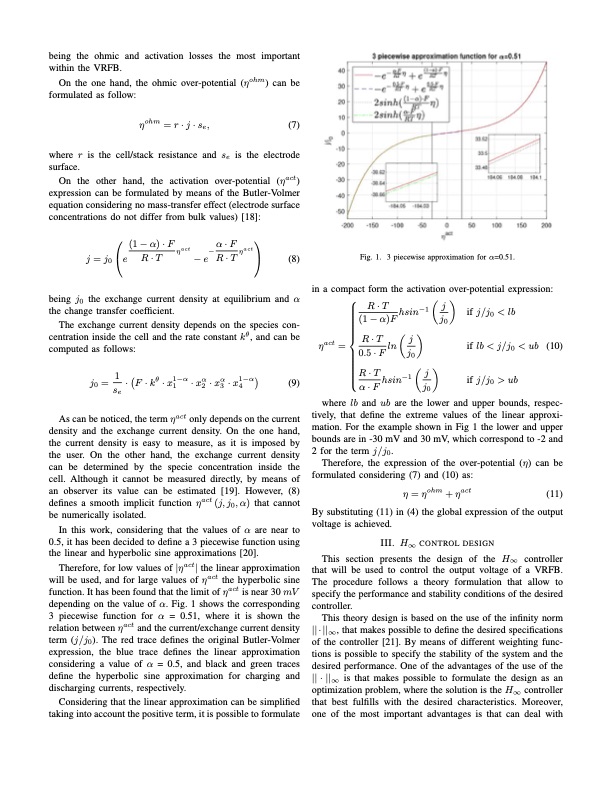ub
ηact=R·Tln j
0
0.5·F j 0
α·F j0
where lb and ub are the lower and upper bounds, respec- tively, that define the extreme values of the linear approxi- mation. For the example shown in Fig 1 the lower and upper bounds are in -30 mV and 30 mV, which correspond to -2 and 2 for the term j/j0.
Therefore, the expression of the over-potential (η) can be formulated considering (7) and (10) as:
η = ηohm + ηact (11) By substituting (11) in (4) the global expression of the output
voltage is achieved.
III. H∞ CONTROL DESIGN
This section presents the design of the H∞ controller that will be used to control the output voltage of a VRFB. The procedure follows a theory formulation that allow to specify the performance and stability conditions of the desired controller.
This theory design is based on the use of the infinity norm || · ||∞ , that makes possible to define the desired specifications of the controller [21]. By means of different weighting func- tions is possible to specify the stability of the system and the desired performance. One of the advantages of the use of the || · ||∞ is that makes possible to formulate the design as an optimization problem, where the solution is the H∞ controller that best fulfills with the desired characteristics. Moreover, one of the most important advantages is that can deal with
PDF Image | H control of a redox flow battery overpotentials

PDF Search Title:
H control of a redox flow battery overpotentials
Original File Name Searched:
2523-Flow-controlling-tuning-for-the-voltage-flow-battery.pdf
DIY PDF Search: Google It | Yahoo | Bing
Salgenx Redox Flow Battery Technology: Salt water flow battery technology with low cost and great energy density that can be used for power storage and thermal storage. Let us de-risk your production using our license. Our aqueous flow battery is less cost than Tesla Megapack and available faster. Redox flow battery. No membrane needed like with Vanadium, or Bromine. Salgenx flow battery

